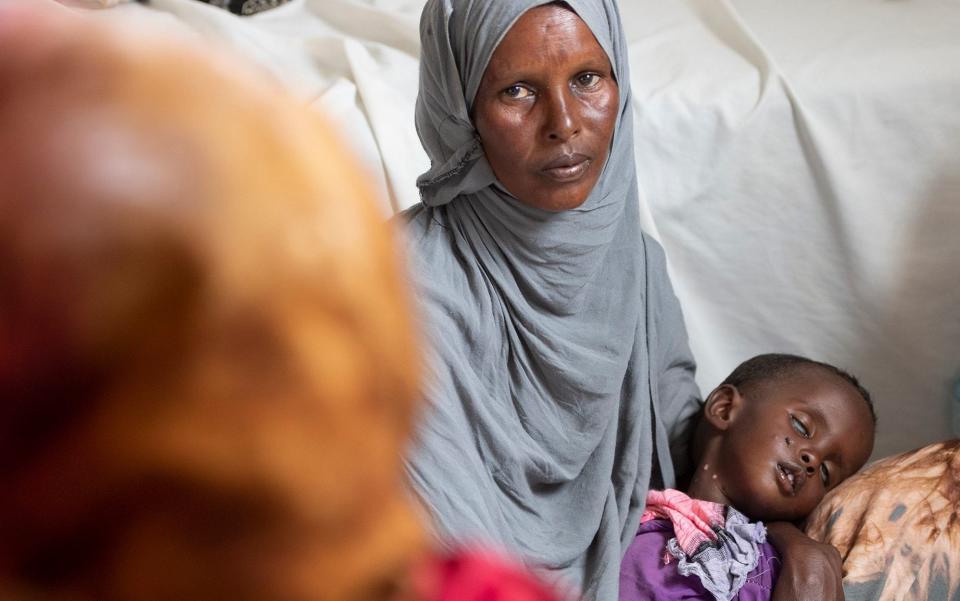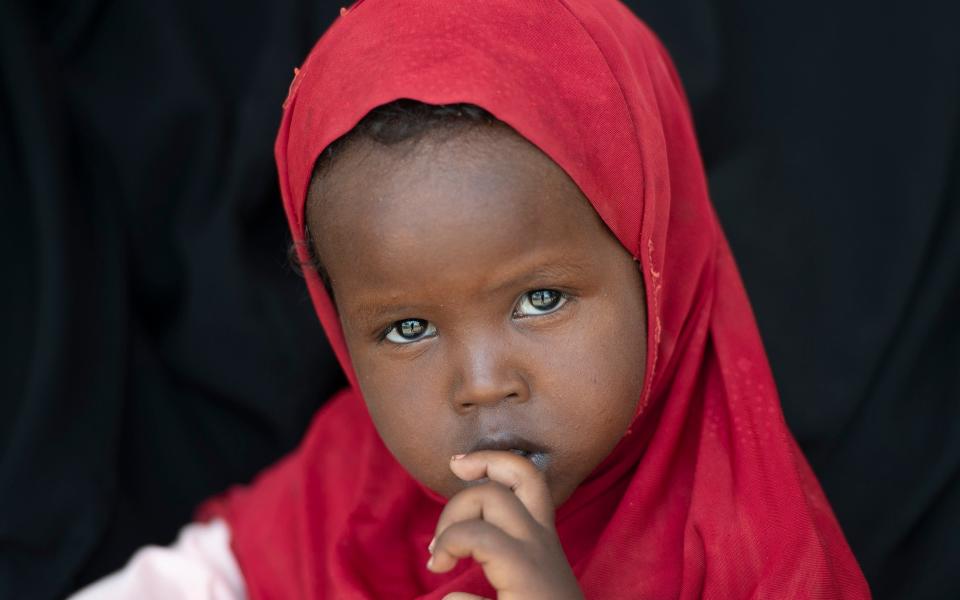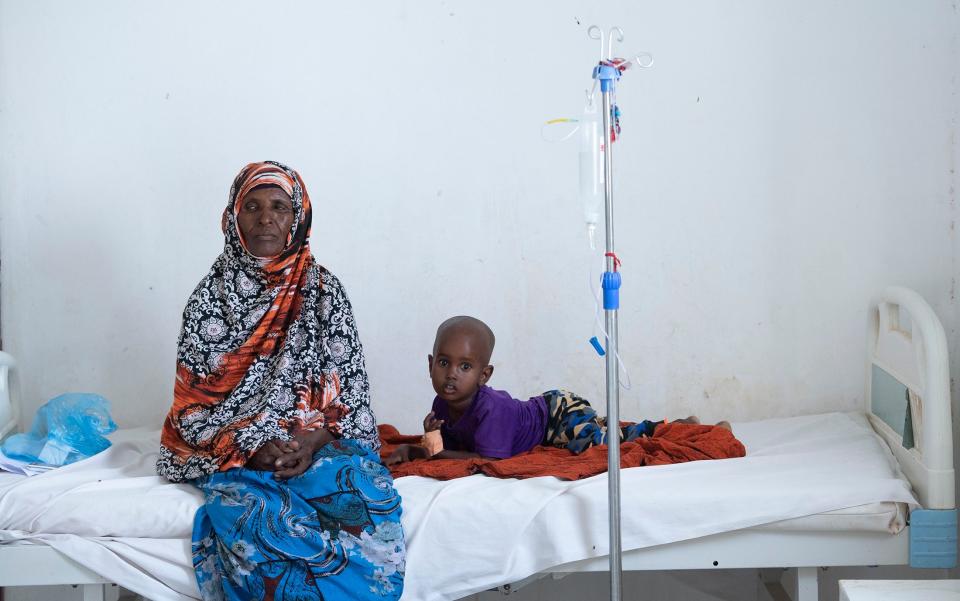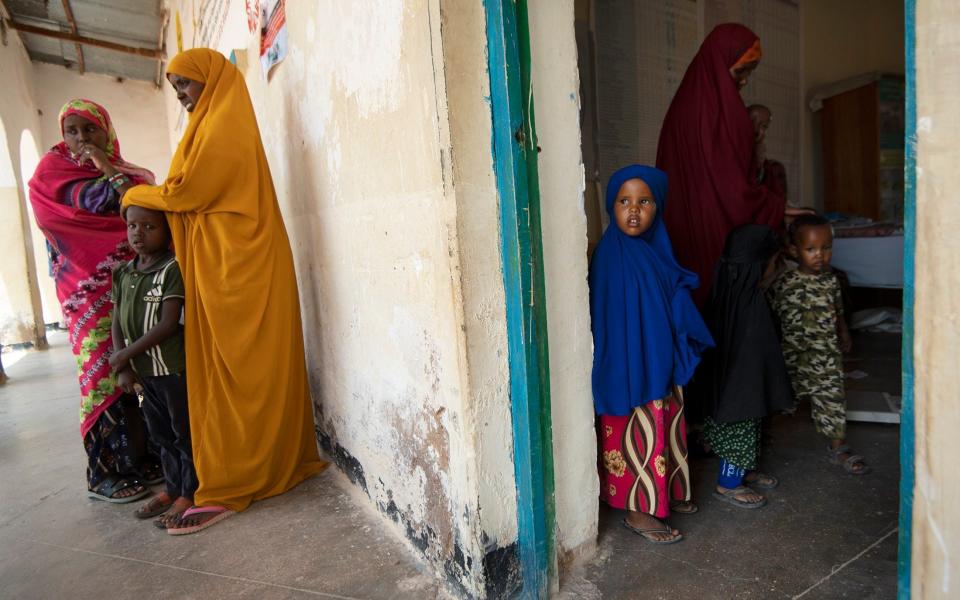‘We can no longer afford to eat’: Ukraine war pushes millions into starvation

By the time Fahima had scraped together $10 for a lift to the health clinic, her youngest son was wasting away. At 16 months old, Bilal weighed just 10 pounds when he was admitted to the whitewashed paediatric ward – less than half the average for a young boy his age.
“His whole demeanour has changed,” Fahima* told the Telegraph this week, soothing the sleepy toddler in her arms. “He was friendly and loved to play. Now, you can see, he has nothing left.”
The pair are from Somaliland, a de facto state considered internationally as part of Somalia. They are among roughly 15 million people experiencing acute hunger or starvation across the Horn of Africa, where a major drought has been exacerbated by a food crisis linked to the war in Ukraine.
According to estimates from Save the Children and Oxfam, one person is dying every 48 seconds in the region. In Somalia alone, 81,000 people are already living in “pockets of famine”, while the United Nations has warned that 350,000 children “will perish by the summer” without urgent action.

The drought, the third in only 11 years, has been exacerbated by global turmoil. Pandemic-related economic disruption and rampant inflation had already hit the region hard, with the price of a local food basket in Somalia soaring by 36 per cent between February 2021 and 2022.
But then Russia invaded Ukraine, a move which exposed the Horn of Africa’s dependence on Black Sea grain and sunflower oil imports – vital basic foodstuffs that are stuck in Ukraine due to a Russian blockade of the Black Sea port of Odesa.
“The situation is becoming worse by the day,” said Mohamud Mohamed Hassan, director of Save the Children Somalia. “The war in Ukraine has dealt a serious blow to what was already a perilous situation for families and children… the result is inflated market prices and unaffordable food and fuel prices.”
In Somalia, he adds, some 90 per cent of wheat imports usually come from Russia and Ukraine – where roughly 25m of tonnes of wheat is currently rotting in silos, prevented from leaving port due to Moscow’s naval blockade.
The Russian army has also been accused of destroying equipment and stealing grain, while the West fears Vladimir Putin is trying to weaponise food supplies. According to the World Food Programme, Somalia, Ethiopia and Kenya will be “hardest hit by shocks of the global wheat trade”.
“We have seen food prices rise this year in a dramatic way that we did not expect,” said Abdul Risaac, the mayor of Burao, a small city in Somaliland. “In some places food prices have increased five times compared to before the conflict in Ukraine... it’s a very unfortunate situation that we are in.”
'The price of rice has doubled'
In Ainabo – a dusty town in western Somaliland surrounded by vast, parched flatlands and steep, rocky mountains – Fahima is feeling the crunch.
The mother of seven comes from a long line of pastoralists, who have roamed the arid region for generations with their livestock. Now, though, the herd has dwindled to just 20 frail goats, while carcasses of starved animals scatter the region, left to the hyenas to devour.
“When the livestock die we become helpless, because that represents our livelihood and our savings, it is what we depend on,” Fahima said.
But just as her income has shrunk, a conflict almost 5,000 miles away pushed food and fuel prices to record highs.
“In the last two months food has become so much more expensive, the price of rice has doubled,” Fahima said, batting a fly away from Bilal’s forehead. “We are forced to buy less because of the increased cost. I’m struggling to secure enough food for my children.”


The consequences could have been deadly for Bilal, who is now receiving treatment for severe malnutrition – a therapeutic milk formula, served in an orange plastic cup.
Many children in the region have fared worse, especially in southern Somalia, where the drought has been acute and insecurity has complicated access.
'Looking worse' than the 2011 famine
It’s a situation that looks set to deteriorate, with few signs of an end to soaring prices. By some estimates, the world has just 10 weeks worth of stockpiled wheat left, while India – the world’s second-largest producer – has suspended exports amid concerns that extreme temperatures could wipe out up to 15 per cent of this year’s harvest.
Meanwhile the Horn of Africa’s rainy season, which runs between April and June, has brought with it little rain, raising a very real prospect of a fourth consecutive failed season. Without urgent intervention, the WFP estimates that a further 5m people will “march towards starvation” by the end of the year, taking the total facing food insecurity to 20m.
“I think it’s a really bad situation, it’s certainly looking worse than [the famine in] 2011 at the moment,” said Lizzie Walker, head of the British Government’s Office in Hargeisa, the capital of Somaliland.

But although a rapid response during the 2016/17 drought in Somalia averted a famine on the scale of 2011 – when 260,000 people died – it looks unlikely that assistance will match the scale of the current situation.
“The outlook has dramatically worsened over the last two to three months [due to the] Ukraine crisis,” said Dr Nisar Majid, a research associate at the London School of Economics focused on Somalia. “This is both in terms of the cost of food imports, but also the availability of funds… [Ukraine] is soaking up aid budgets.”
In 2016/17, the UK provided £861m of aid – so far this year, it has committed £40m. Overall, the UN says that less than four per cent of its £3.5 billion appeal for Ethiopia, Kenya and Somalia has been funded.
As a result, the WFP says it has been forced to “take from the hungry to feed the starving” and cut entire programmes. In Somalia, the organisation has already halted malnutrition prevention programmes, diverting resources to treat those already suffering.
“Maybe the international community are just fed up of us,” said Abdi Aziz, first minister of the remote town of Garadag.
For Fahima, sitting cross-legged on the health clinic’s tiled floor some 70 miles away, there’s little to do bar pray.
“Of course I am worried. I feel helpless… I have no stable way of getting food,” she said. “But, god willing, we’ll survive.”
*Names have been changed
Protect yourself and your family by learning more about Global Health Security

